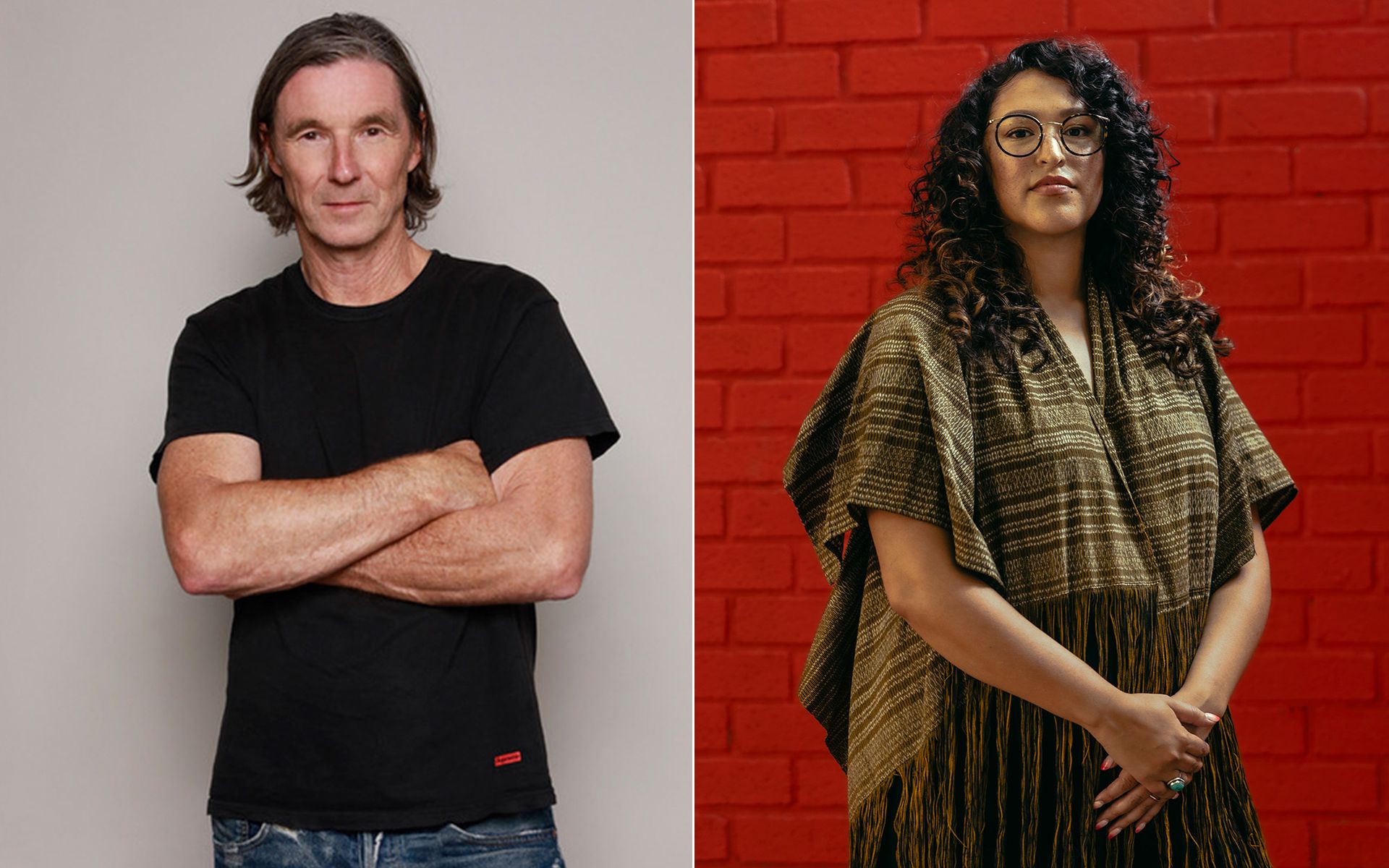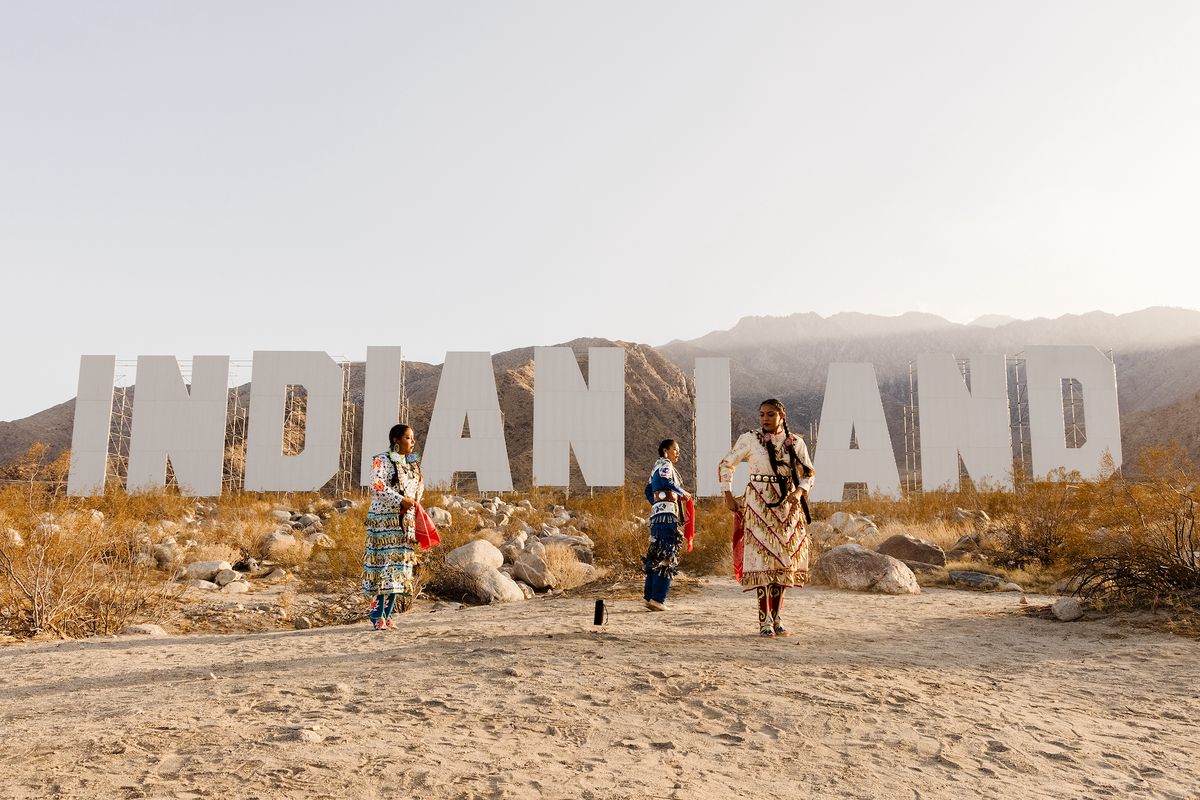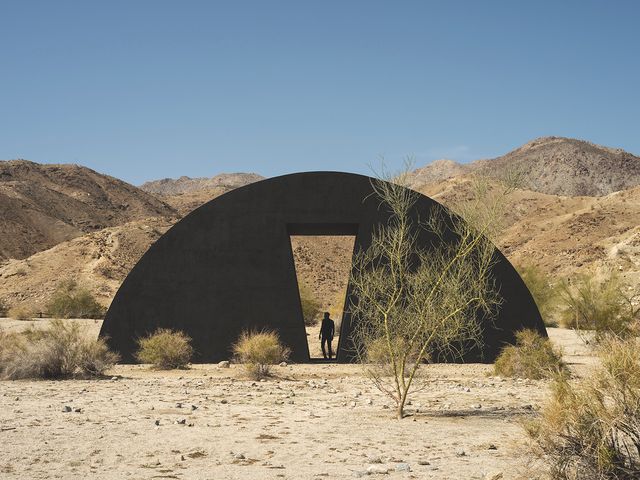Since the first edition of Desert X in 2017, which featured site-specific installations by art stars like Richard Prince, Doug Aitken and Tavares Strachan with very few women and no local Native American artists participating, the Coachella Valley biennial has done some soul searching. Its organisers have begun using land acknowledgements and art commissions both to pay homage to the Cahuilla Indians who long preceded the region’s white settlers. And their decision to bring on co-curators like César García Alvarez and Diana Campbell to work with artistic director Neville Wakefield has helped democratise and energise successive editions.
Today the organisation is announcing the co-curator of its 2025 edition: Kaitlin Garcia-Maestas, who is curator and director of exhibitions at Socrates Sculpture Park in Long Island City, New York, and will remain in that job. “Historically most if not all of the previous co-curators for Desert X have had an institutional affiliation, so it’s somewhat common. But I’m really lucky that the board and executive leadership of Socrates have been really supportive of this opportunity,” she says.
Garcia-Maestas is used to being in two places at once, having split time during the pandemic years between Arkansas, where she was a curator with the Crystal Bridges Museum of American Art’s contemporary art satellite, The Momentary, and New Mexico, where she grew up. It was while working at the Momentary that she got to know Wakefield and invited him to co-curate the 2022 exhibition, A Divided Landscape, with her.

Desert X artistic director Neville Wakefield (left) and Desert X 2025 co-curator Kaitlin Garcia-Maestas (right) Wakefield: courtesy Desert X; Garcia-Maestas: Luis Corzo, courtesy Desert X
That show featured seven artists confronting the frontier mythology—some would say pathology—of the American West, with its whitewashing of the history of violence against Native Americans. The show included two artists familiar to Desert X regulars: Nicholas Galanin, who planted the epic sign spelling out “Indian land” for his Never Forget artwork in Desert X 2021, and Xaviera Simmons, who did a series of billboards that year. One twist: the Arkansas show included 19th-century Westernpaintings from the Crystal Bridges collection by the likes of George Catlin and Jasper Francis Cropsey to put the conflicting ideologies into dialogue.
Desert X will give the curators, they say, a more expansive venue to explore such issues of “Indigenous sovereignty, postcolonial history” and more. “We were able to scratch the surface, but there is more to the conversation,” says Garcia-Maestas.
And this time the setting—or collaborator—will be the Western landscape itself, as Desert X is spread out over many outdoor sites in the Palm Springs area. “We’re going from a climate-controlled museum environment to a climate that is out of control,” Wakefield says, noting the recent “hurriquake” that rocked Palm Springs. “As curators we tend to try to exclude those variables, but Desert X is an opportunity to embrace them.”
Asked about its controversial sister program, Desert X AlUla, Wakefield says that biennial is on schedule to open its next edition in February 2024. Funded by Saudi Arabia, the biennial began there in 2020 despite the outrage—and resignations—of three Desert X board members over the prospect of partnering with a country known for its human rights abuses targeting migrants, women, journalists and members of the LGTBQ community. (Some members of the Palm Springs City Council also took a public stand against funding Desert X 2021.)
Wakefield, who serves as artistic director of the Saudi event as well, warns against “conflating a people and an artistic practice with a regime”, he says. “We believe in the power of cultural dialogue. A lot of the criticism before came from people who had little or no awareness of what artists were doing there—what they were doing to create channels of free and individual expression.”
He says he has not stepped in to curate Desert X AlUla this time. The two curators for that show will be revealed in October, with word of participating artists to come later in the year.
Correction: An earlier version of this article incorrectly reported that there were no Native American artists featured in the first edition of Desert X; in fact, the Choctaw-Cherokee artist Jeffrey Gibson was included.



